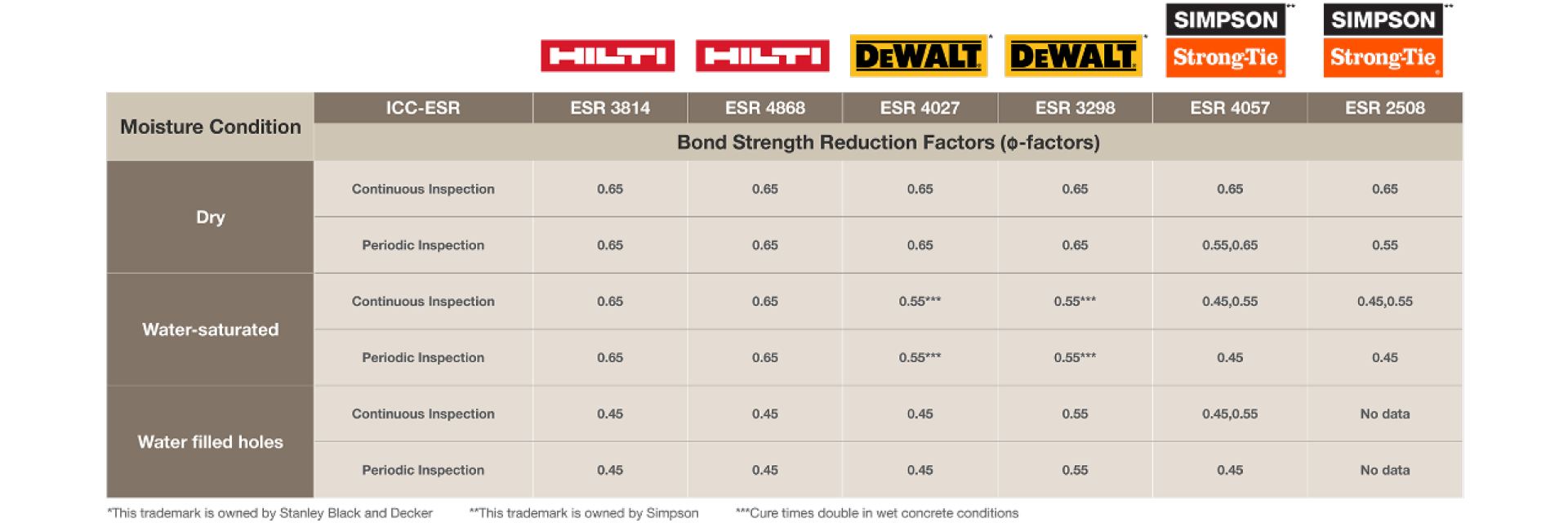- Home
- Solutions
- Business Optimization
- Anchor Design Center
- Beyond Bond Comparison
ADVERSE CONDITIONS CAN’T STOP HILTI ADHESIVE ANCHOR SYSTEMS
Hilti adhesive anchor systems do what others cannot because they’re specifically designed to overcome factors that are often overlooked such as:
- The temperature of concrete or base material at the time of installation and curing
- The necessary preparations for successful hole drilling
- The moisture levels of concrete at the time of installation
Don't Let Tough Jobsites Set You Back
Hilti’s dedication to using technology to make construction faster, safer and more efficient shines through in the design of our high-performance adhesive anchors.
Downtime and delays often cost more than you can afford, but the performance of our chemical anchors help customers save on more than just the price of the product itself.
Hilti helps lower overall spend through:
- Lower usage costs
- Reduced installation costs
- Increased speed of production
Temperature
A chemical reaction between the hardener and the resin is what allows two-part anchors to cure, but how fast or slow this process happens is completely dependent on the temperature of the base material where the anchor is installed. It’s important to know adhesive anchor systems can have various limitations, such as:
- The range of base material temperatures at the time of installation
- The time required for the adhesive anchor to cure
- The time permitted to install an adhesive anchor
- Conditioning requirements of the adhesive cartridge

Hole Drilling and Cleaning Methods
If a hole isn’t cleaned before installing an anchor, it won’t properly adhere and will inevitably cause headaches later on. Hilti created SafeSet to simplify the process using two different methods:
- A hollow-drill bit and vacuum system that removes dust and debris during the drilling process
- A proprietary anchor element, such as a Hilti HIT-Z rod, which requires no hole cleaning prior to install (highest load values in the industry)
Since OSHA’s increased silica dust regulations in 2016, many companies have developed similar technologies, but similar doesn’t mean equal. While other products might be able to remove dust and debris during installation, other aspects of the design fail where Hilti succeeds.
Moisture Condition of Base Material
Adhesive anchor systems are often more sensitive to adverse conditions. Unlike the competition, HIT-HY 200-A V3 (faster cure times for colder climates) and HIT-HY 200-R V3 (slower cure times for warmer climates) perform more reliably on jobsites that would have other adhesives creating downtime that no one wants to deal with.
Whether your design assumes dry or water-saturated concrete or water-filled holes, HY 200-A V3 and HY 200-R V3 chemical anchors present designers and contractors with an approved solution in both hot and cold climates.



